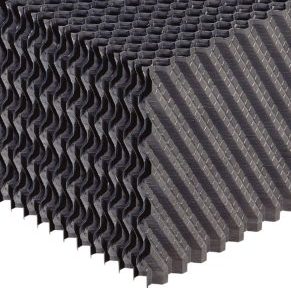Both trickling filter and activated sludge processes are common methods of secondary wastewater treatment.Whilecommonlyperceived作为竞争技术,你知道这些two processes canactually worktogetherto improve performance, reduce operational cost, and simplify operation?When wethinkof trickling filter and activated sludge processes as partners instead of competitors,weend up witha best–of–both–worlds approach to producehigh-quality final effluent at the lowest possible cost.Let’stake a closer look:
What is a Trickling Filter?
Trickling filtersare non–submergedfixed-bed biological reactors. Trickling filtersutilizefixed mediasurfacesthatserve asa host for microorganisms toattach toandformbiofilm.A rotaryarmdistributes wastewaterover themediawherepollutants are effectively removed.Most trickling filtersrely solely onnaturaldraftventilationto supply aeration.This means theoxygenrequiredfor the process requires no large blowers or aeration system. Filters with aerationsystemsuse low-power fans that are usually run intermittently or when needed.
What is Activated Sludge?
Activatedsludge processeseliminate organic pollutants from wastewaterthroughmicroorganismsthat are suspendedin an aeration basin.In activated sludge processes, oxygen is suppliedviamechanical or diffused aeration.Organic matter and ammonium nitrogen are removed via the suspended microorganismsin the wastewater.
Benefits of Combining Processes
两个过程在本质上是有氧的共享goal of removing organic compounds from wastewater. The level of treatment that can be achieved with either independent process is comparable. By combining processes, wastewater treatment plants can capitalize on the benefits of both technologies while minimizing their respective shortfalls.
Often times, trickling filters precede activated sludge to provide a stabler, more robust system. A trickling filter can increase activated sludge capacity and help absorb shock loads. As trickling filters typically only require power for pumping, incorporating a trickling filter into an activated sludge system can reduce the amount of energy required by 25%-50%. Activated sludge technology can also help to improve effluent quality when paired with a trickling filter system.
Combining processes can also reduce overall system footprint. As illustrated below, a trickling filter system already yields an approximate 20% reduction over a traditional activated sludge system. But when combining processes, even greater footprint savings can be achieved – from 30% with a trickling filter/solids contact process up to 49% if employing a roughing filter/activated sludge process.

When it comes tocombining two technologies, either process can be used as the first stagein a two-partseries, or the two systems canoperatein parallel.Combined processes are not limited to trickling filter and activated sludge technologies. Trickling filterscan also complement rotating biological contactors (RBC), lagoons, or wetlands.The effectiveness of a combined approachultimately dependson wastewater characteristics, a plant’s design and operation, and local environmental regulations.It is important to take a situational approachwhen designing a combined system layout.

Better Together
Combining systems can yield more comprehensive and effective treatment. While combining processes can minimize the shortcomings commonly associated with two independent technologies, it will not eliminate all issues. Like any marriage, there will still be issues that exist. However, most issues can be easily remedied with proper design and operation. Keep in mind that there are many possible combinations when it comes to complementary processes and to evaluate your site-specific needs when determining an appropriate pairing.
In November 2022, we launched a monthly, ten-session webinar series titledTrickling Filters for the 21stCentury.This series was created for wastewater professionals to learn more about trickling filter system design, advantages, and integrations with complementary technologies. We devoted an entire session to discussing the benefits and limitations of combined processes and explored data from various plants in the United States and Canada that have successfully combined processes. Hear an in-depth review of this topic from John Harrison, P.E., Consulting Engineer atJohn R Harrison Consulting, by visiting ourwebinar series webpageand clicking on the session titledBetter Together: Combined Trickling Filter and Activated Sludge Processes.



